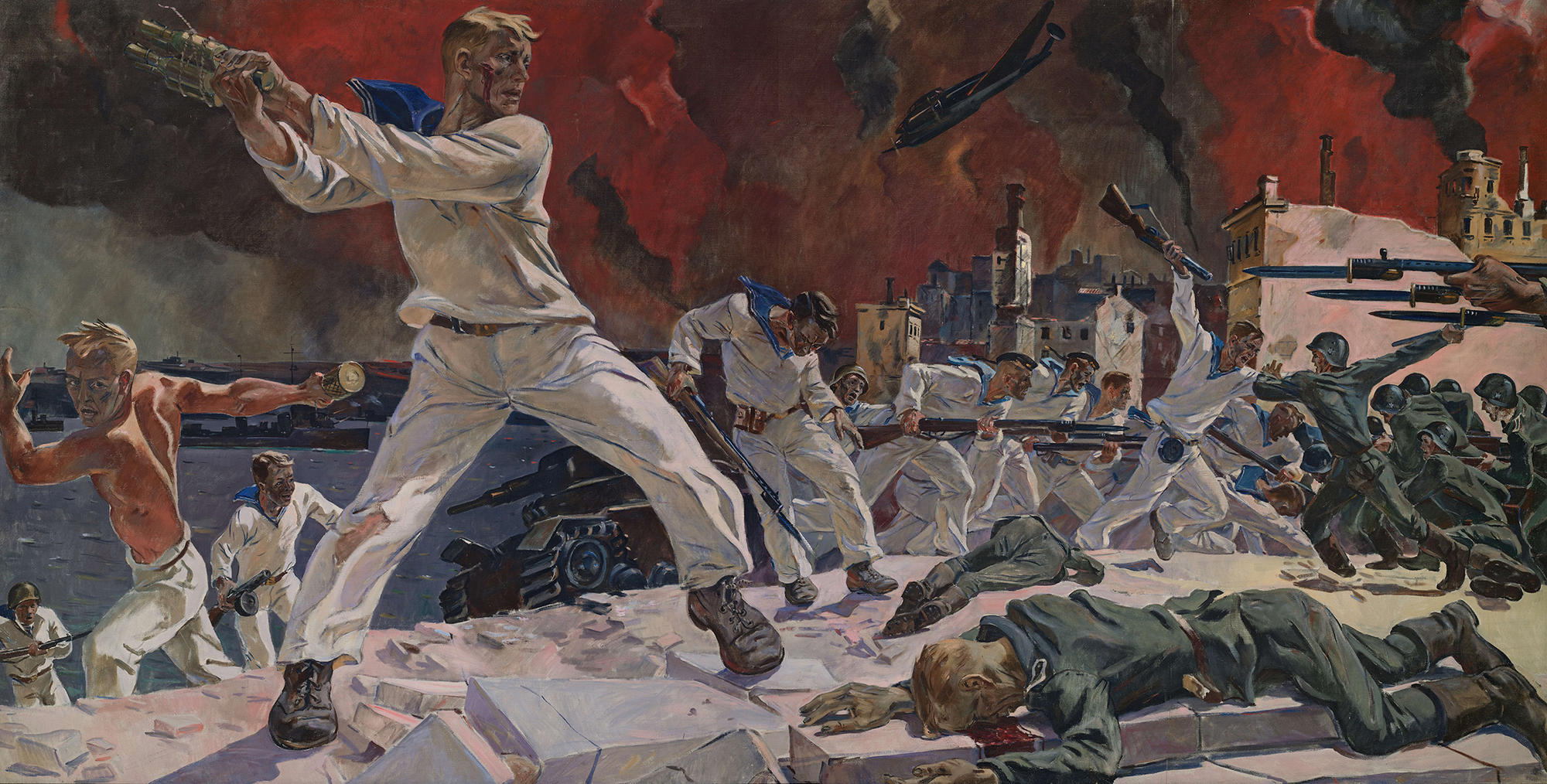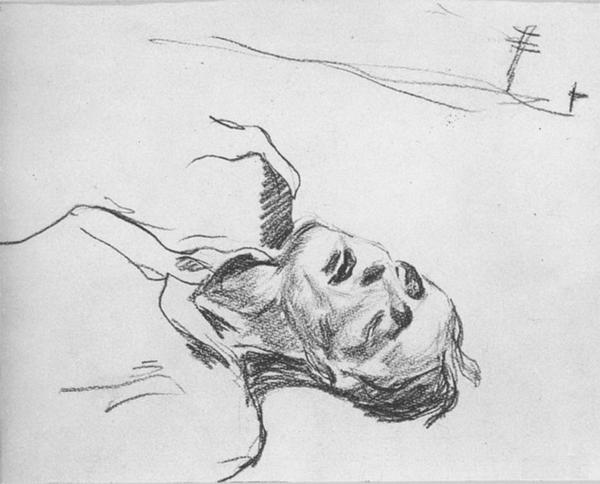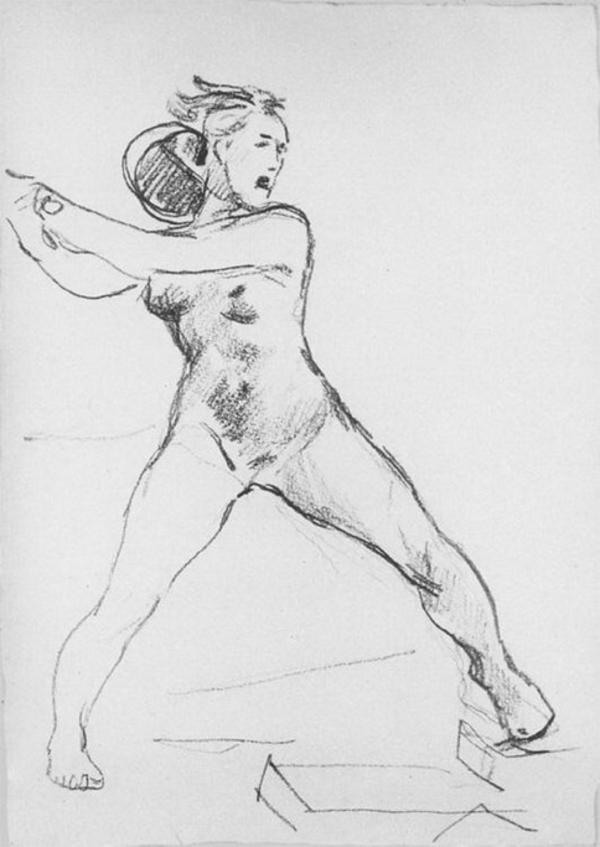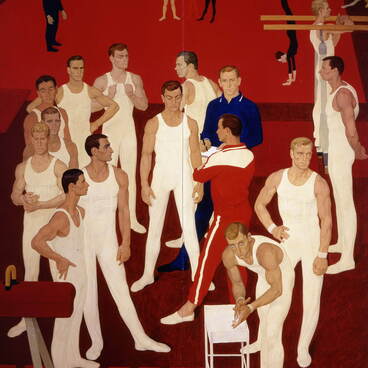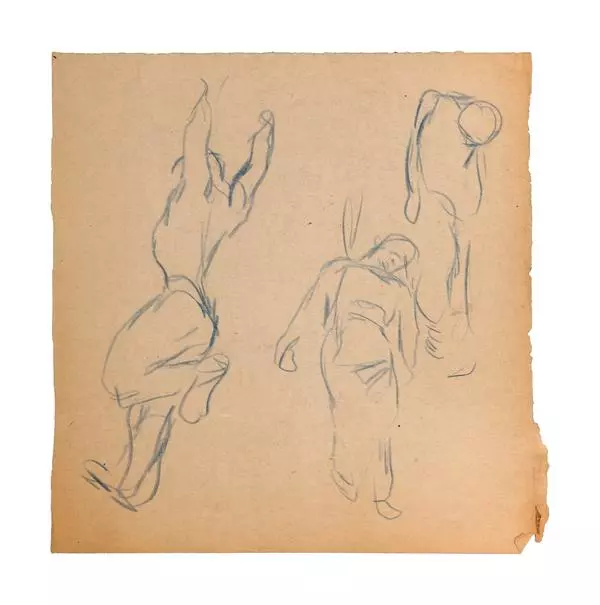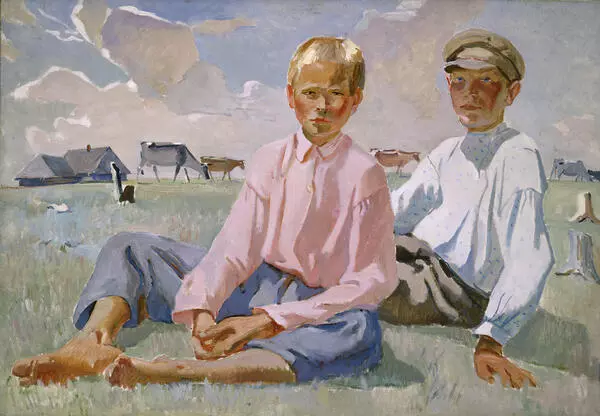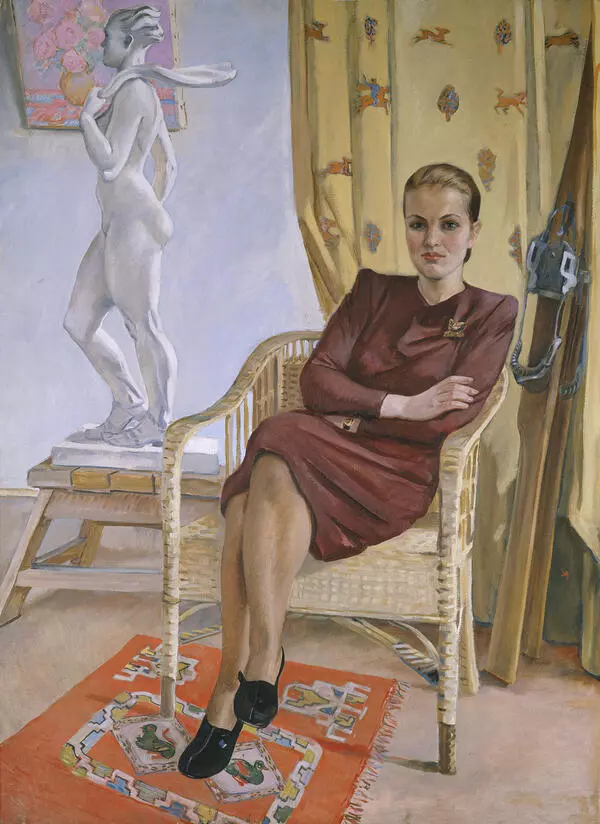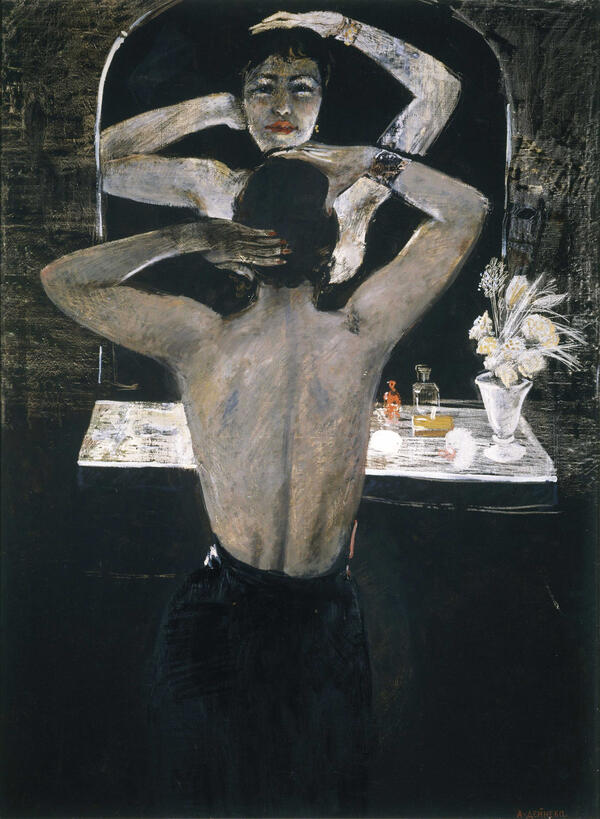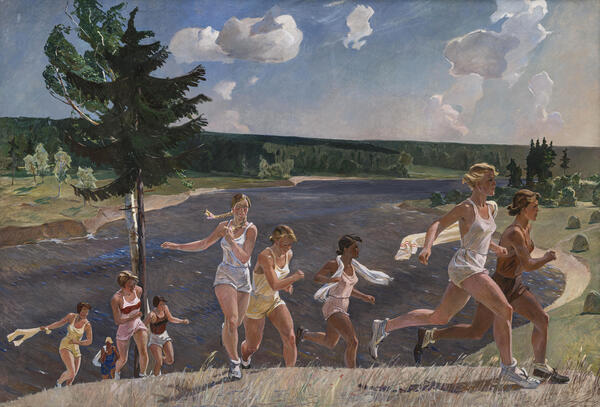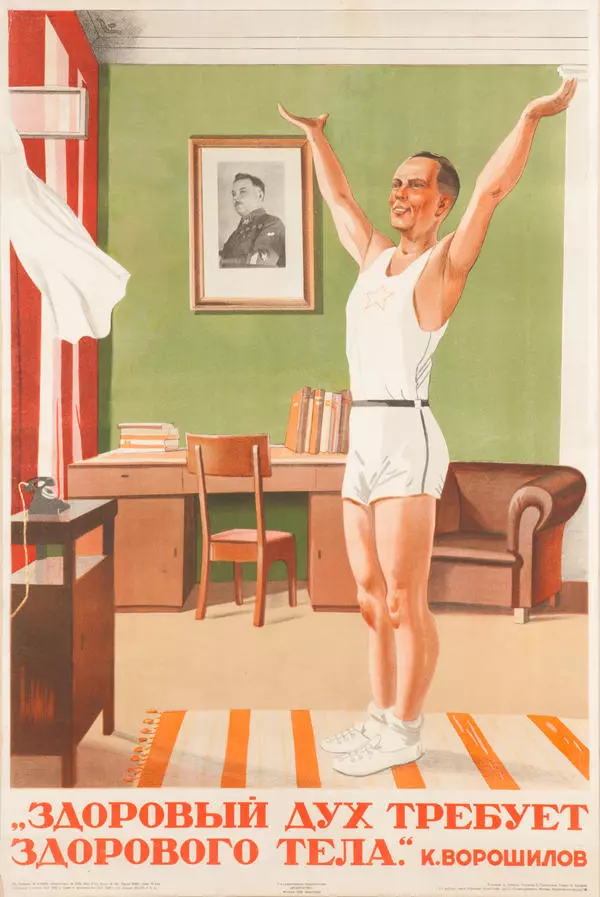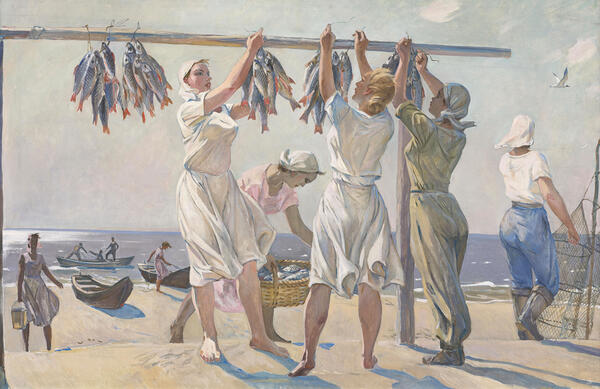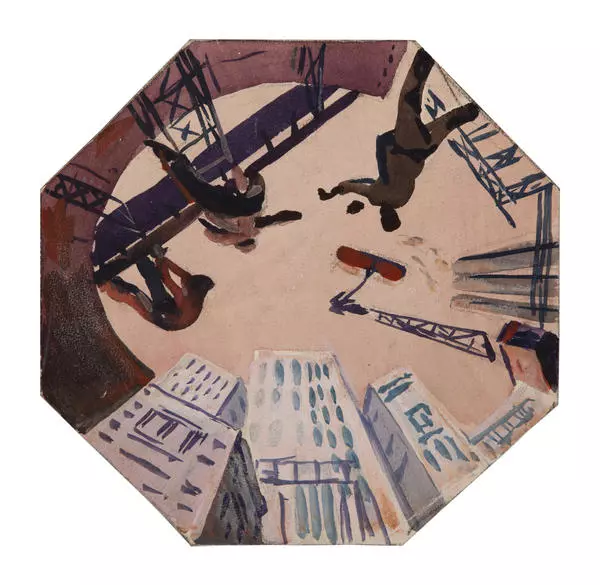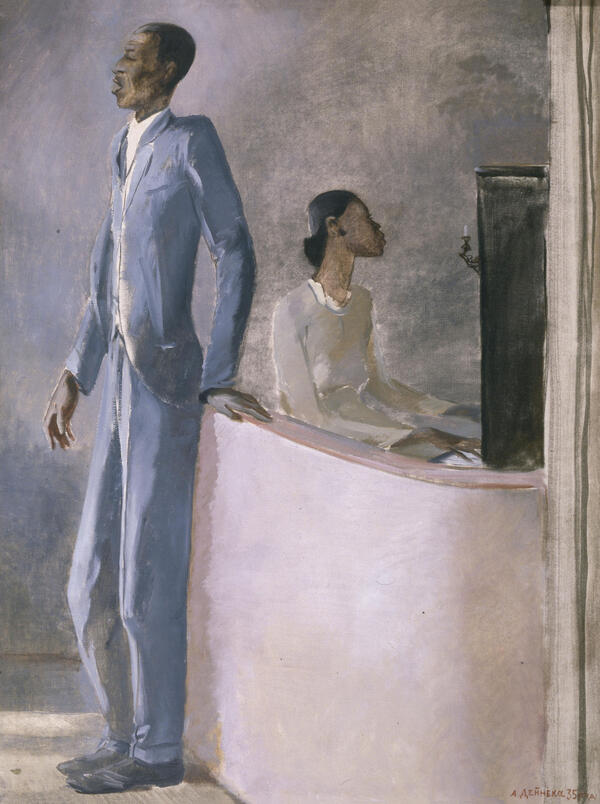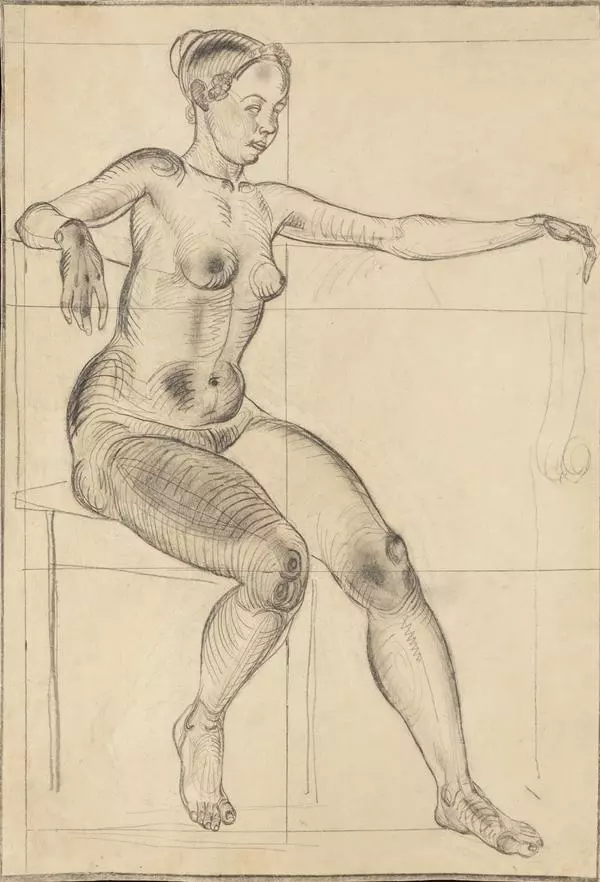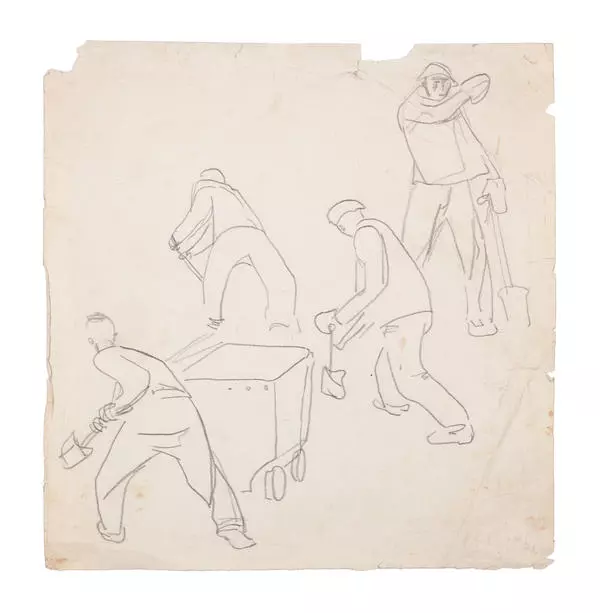Alexander Deyneka is a Soviet painter and drawing artist, teacher. He eternized in his works many episodes of the Soviet Union’s peaceful and military history. One of such episodes was Sevastopol defense in 1942.
Sevastopol Defense
Время создания
1942
Размер
200x400 cm
Техника
Canvas, oil
Коллекция
67
Открыть в приложении#5
Alexander Deyneka
Sevastopol Defense
#2
#6
During the war, Deyneka took part in creating agitprop posters for the TASS Windows project in Moscow. In 1942, he went to the front in the city of Yukhnov, Kaluga District. From there, the artist returned with plots for several paintings and sketches. He was making several drafts right on the go capturing the images he saw with a pair of lines.
Alexander Deyneka. From front-line sketches. Paper, pencil. Source: www.deineka.ru.
#7
Approximately at the same time, the painter came across a number of photographs of Sevastopol destroyed by the Germans. The artist was very fond of this vibrant southern city, often went there before the war, painted views and its inhabitants. He recalled: I loved this city for its cheerful people, the sea, boats, airplanes. And now I can imagine clearly how everything flies up into the air.
#8
Alexander Deyneka. Dynamo. Sevastopol. Paper, water colour, tempera. 1934. State Tretyakov Gallery
#9
All this impressed Deyneka so much that six months later he completed a large four by two meter canvas dedicated to Sevastopol defense. He saw many battles, but during the siege he was not in the city. News reports and previously collected painted and graphic material helped him in his work.
#10
However, front-line sketches and old landscape drawings of Sevastopol were not enough to convey the whole drama of the event. The artist sculpted the figures of his heroes from plasticine, and painted the sailor with grenades in the foreground from life. It is interesting that an athlete, an acquaintance of Deyneka, posed for him, because all men with a suitable body-built were at the front.
Alexander Deyneka. Sevastopol Defense, sketch. Paper, pencil. 1942. Source: www.deineka.ru.
#11
However, the author did not seek to achieve realism, the character of the canvas is largely symbolic. For example, he deliberately distorted the scale of the figures: Soviet soldiers are much more massive than defeated enemies. This is especially evident when comparing two figures in the foreground.
#12
The bright white uniform of the Russian sailors contrasts with the uniform of the Nazis. There are no holes or spots on the snow-white clothes, which was impossible in a battle. None of them fell, the author showed death of the German soldiers only. The red-black glow of the battle in the background reinforces the impression that it was not concrete armies that were fighting, but the forces of light and darkness.
The city defense lasted for eight months, after which it had to be surrendered, and its residents evacuated. It was still far from the end of the war. But Deyneka’s objective was not to show a specific historical event, but to glorify the Soviet army’s courage and strengthen people’s faith in victory.
#13
The painting was demonstrated at the exhibition The Great Patriotic War in the autumn of 1942. Some critics reproached the artist for the lack of realism, schematism of images and poster character of the work. But over time, Sevastopol Defense was included in the list of the best examples of world battle painting.
#14
State Russian Museum
читать дальшескрыть
00:00
00:00
1x
Sevastopol Defense
Время создания
1942
Размер
200x400 cm
Техника
Canvas, oil
Коллекция
67
Открыть в приложении
Поделиться
